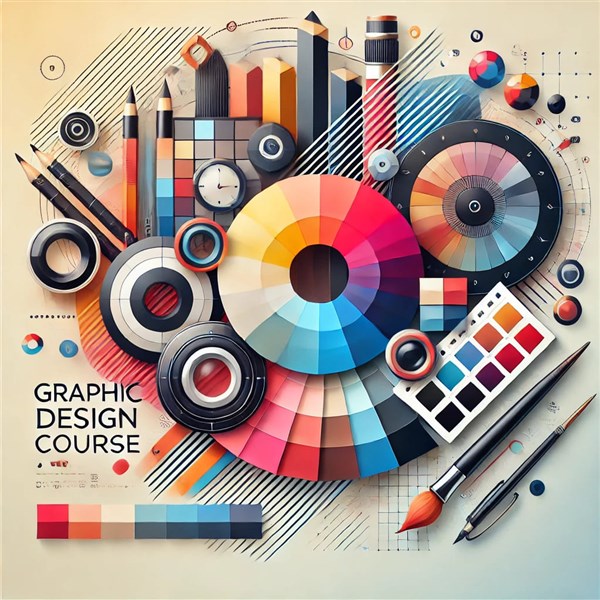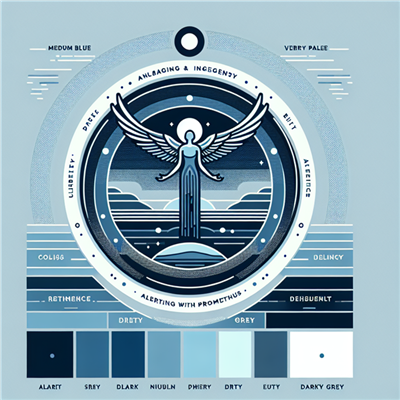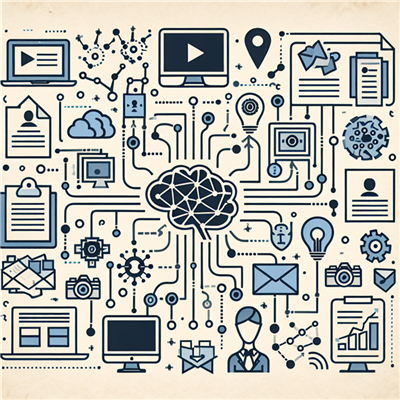
Graphic design is a powerful blend of creativity and technical expertise, playing a vital role in branding, marketing, and storytelling. Whether you're a budding designer or someone looking to polish existing skills, enrolling in a graphic design course is one of the best ways to develop a strong foundation and gain industry-relevant expertise.
But what exactly will you learn in a graphic design course? This blog explores the top skills you’ll acquire, ranging from the fundamentals of design to advanced technical tools, setting you up for a thriving career in this ever-evolving field.
Top Skills You’ll Learn in a Graphic Design Course
1. Typography Mastery
Typography is the art of arranging type to make written language legible, readable, and visually appealing. In a graphic design course, you'll learn the fundamentals of typography, including:
- Type Anatomy: Understanding the structure of letters, such as serifs, ascenders, and descenders.
- Font Pairing: Selecting complementary fonts for cohesive designs.
- Hierarchy and Readability: Using font size, weight, and spacing to guide the viewer’s eye.
Typography is crucial for creating impactful designs, whether for logos, websites, or print materials.
2. Color Theory and Application
Color evokes emotions, influences decisions, and communicates brand identity. A comprehensive graphic design course will teach you:
- Color Psychology: Understanding how different colors impact emotions and perceptions.
- Color Harmony: Combining colors effectively using principles like analogous, complementary, and triadic schemes.
- Practical Application: Choosing color palettes for digital and print designs, ensuring consistency and accessibility.
This skill is essential for crafting visually compelling and emotionally resonant designs.
3. Design Principles and Composition
Good design is built on strong foundational principles. You'll learn key design concepts such as:
- Balance: Achieving visual stability through symmetrical or asymmetrical layouts.
- Contrast: Emphasizing differences to draw attention to specific elements.
- Alignment and Proximity: Ensuring cohesion and structure by organizing elements logically.
- White Space: Leveraging negative space to improve clarity and focus.
These principles are the backbone of all successful designs, helping you create polished and professional work.
4. Proficiency in Design Software
One of the most hands-on aspects of a graphic design course is mastering industry-standard tools. Popular software includes:
- Adobe Photoshop: For photo editing, image manipulation, and creating digital artwork.
- Adobe Illustrator: For vector-based design, such as logos, icons, and illustrations.
- Adobe InDesign: For layout design, including brochures, magazines, and books.
- Canva (for beginners): An intuitive platform for quick and simple designs.
Courses provide step-by-step guidance on using these tools effectively, ensuring you’re job-ready.
5. Understanding Branding and Identity Design
Graphic design is a cornerstone of branding. You’ll learn how to:
- Create Logos: Design symbols that capture a brand’s essence.
- Develop Visual Identity: Define color palettes, typography, and graphic elements for a cohesive brand image.
- Maintain Brand Consistency: Ensure designs align with brand guidelines across different platforms.
This skill is crucial for working with businesses, helping them stand out in competitive markets.
6. UI/UX Basics
Modern graphic designers often cross into the realm of user interface (UI) and user experience (UX) design. A course will introduce you to:
- Wireframing: Designing basic layouts for websites or apps.
- Interactive Design: Creating buttons, menus, and animations for user engagement.
- User-Centered Design: Ensuring designs are intuitive and meet user needs.
These skills are highly valued in the digital era, especially in web and app design projects.
7. Image Editing and Retouching
High-quality visuals are critical for any design project. You'll develop skills in:
- Photo Manipulation: Combining elements to create stunning compositions.
- Retouching: Enhancing images for professional use.
- Optimization: Preparing images for web and print to maintain quality while minimizing file size.
This expertise is especially useful for marketing, advertising, and e-commerce industries.
8. Storytelling Through Visuals
Graphic design is more than aesthetics—it’s about communicating a story. You’ll learn how to:
- Use Visual Metaphors: Represent complex ideas through imagery.
- Guide the Viewer’s Journey: Lead users through a narrative using layout and design elements.
- Create Emotional Impact: Evoke feelings through color, typography, and composition.
This storytelling ability makes designs memorable and impactful.
9. Time Management and Workflow Optimization
Graphic design courses often simulate real-world projects, teaching you:
- Project Planning: Breaking down tasks and setting realistic deadlines.
- Version Control: Managing design iterations effectively.
- Collaboration Tools: Using platforms like Figma or Adobe Creative Cloud for team projects.
These skills are essential for meeting client expectations and delivering work on time.
10. Portfolio Development
Building a portfolio is one of the most important outcomes of a graphic design course. You’ll learn how to:
- Curate Your Best Work: Showcase projects that highlight your skills and versatility.
- Tell a Story: Explain the process and thinking behind each design.
- Present Professionally: Create a digital portfolio that impresses potential employers or clients.
A strong portfolio is your ticket to a successful career in graphic design.
Conclusion
Enrolling in a graphic design course is an investment in your creative and professional growth. From mastering typography and color theory to learning advanced software and branding techniques, these courses equip you with the skills to excel in a competitive industry.
Whether you’re aspiring to work in advertising, web design, or freelance, the knowledge and expertise gained from a graphic design course will prepare you for success.
By learning these skills from a Graphic Design Course, you'll be well-equipped to create compelling designs that effectively communicate your message. Koenig Solutions, a leading IT training company, offers comprehensive graphic design courses that cover these skills and more, ensuring you're well-prepared for a career in this dynamic field.
Are you ready to unlock your creative potential? Start exploring graphic design courses and take the first step toward a fulfilling design career today!







COMMENT